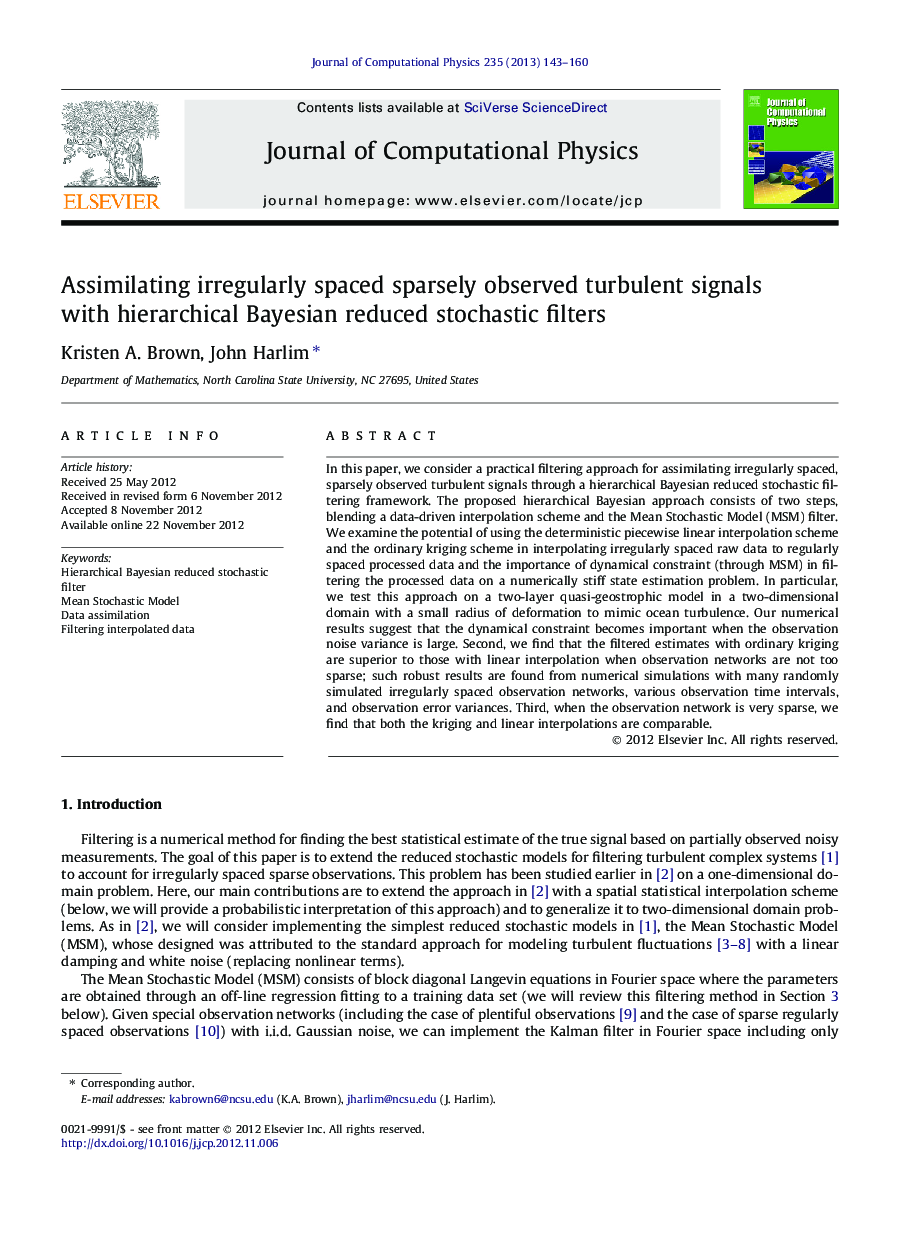| Article ID | Journal | Published Year | Pages | File Type |
|---|---|---|---|---|
| 6933861 | Journal of Computational Physics | 2013 | 18 Pages |
Abstract
In this paper, we consider a practical filtering approach for assimilating irregularly spaced, sparsely observed turbulent signals through a hierarchical Bayesian reduced stochastic filtering framework. The proposed hierarchical Bayesian approach consists of two steps, blending a data-driven interpolation scheme and the Mean Stochastic Model (MSM) filter. We examine the potential of using the deterministic piecewise linear interpolation scheme and the ordinary kriging scheme in interpolating irregularly spaced raw data to regularly spaced processed data and the importance of dynamical constraint (through MSM) in filtering the processed data on a numerically stiff state estimation problem. In particular, we test this approach on a two-layer quasi-geostrophic model in a two-dimensional domain with a small radius of deformation to mimic ocean turbulence. Our numerical results suggest that the dynamical constraint becomes important when the observation noise variance is large. Second, we find that the filtered estimates with ordinary kriging are superior to those with linear interpolation when observation networks are not too sparse; such robust results are found from numerical simulations with many randomly simulated irregularly spaced observation networks, various observation time intervals, and observation error variances. Third, when the observation network is very sparse, we find that both the kriging and linear interpolations are comparable.
Keywords
Related Topics
Physical Sciences and Engineering
Computer Science
Computer Science Applications
Authors
Kristen A. Brown, John Harlim,
